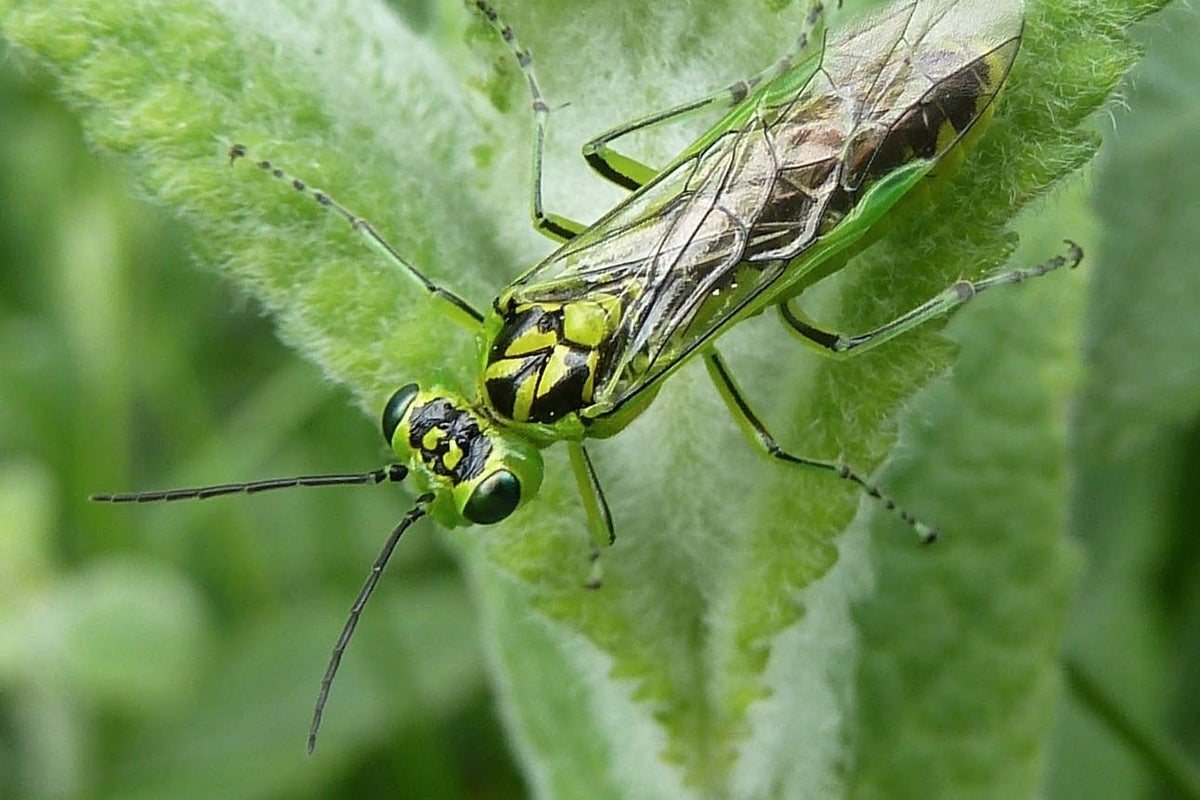
A “remarkable” discovery about a wasp-like insect’s mechanism for cutting into plants could have implications for modern surgery, scientists say.
Researchers at Heriot-Watt University examined how female sawflies make such specific cuts when planting their eggs into plants.
They found that sawfly’s egg-laying organ – called an ovipositor – acts like a biological reciprocating saw which instinctively knows when to cut and when to push material aside.
The female sawflies must avoid killing the plants when laying their eggs, and a peer-reviewed study found that they showed a natural selectivity in which material to cut, avoiding damage to the plant structure.
Dr Verdaguer Mallorquí said: “We’ve discovered something remarkable – a cutting mechanism that essentially thinks for itself.
“The sawfly’s egg-laying organ can cut through soft plant tissue but automatically avoids the plant’s tough internal “plumbing” including the tubes that carry water and nutrients.
“This ensures the plant survives and serves as a food supply for the larvae coming from the eggs.
“This selective cutting happens purely through the tooth geometry and composition interacting with different material properties of the plant – no sensors or computers but rather elegant engineering refined by millions of years of evolution.”
The research team scaled up the sawfly’s cutting mechanism 400 times and tested it on material which mimics human tissue.
They found the system operated on a similar “ultimate stress threshold”, displacing the parts below this threshold.
Professor Marc Desmulliez explains: “This discovery has profound potential implications for surgical practice.
“Current surgical tools often struggle in complex operations. Surgeons frequently work in blood-flooded environments where visibility is poor and the risk of accidentally cutting vital structures is high.
“A surgical instrument based on this natural mechanism could instinctively avoid critical tissues whilst cutting precisely where it is needed – essentially giving surgeons a tool that helps prevent mistakes.
“Further input is now needed from surgeons but this newly discovered mechanism has tantalising prospects.”
The team used advanced electron microscopy and 3D imaging to decode the precise geometry of sawflies’ cutting teeth.
They discovered that small serrations work in concert with larger protrusions to create the selective cutting action.
It is the passive nature of this mechanism which could make it useful for surgery, they argue, as surgeons often work in blood-flooded environments where visibility is poor.
Findings from the international team’s work were published in the journal Bioinspiration and Biomimetics.
